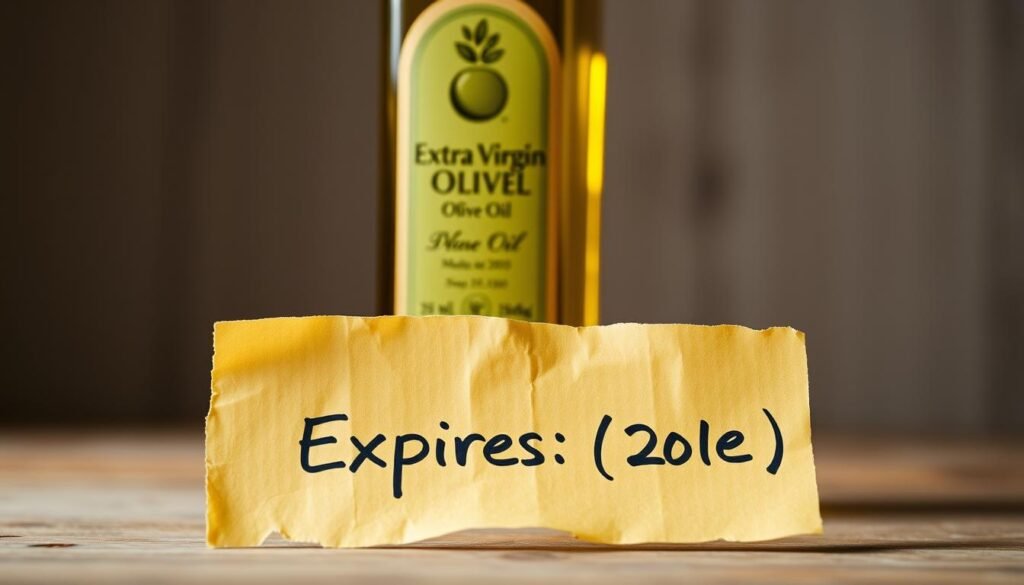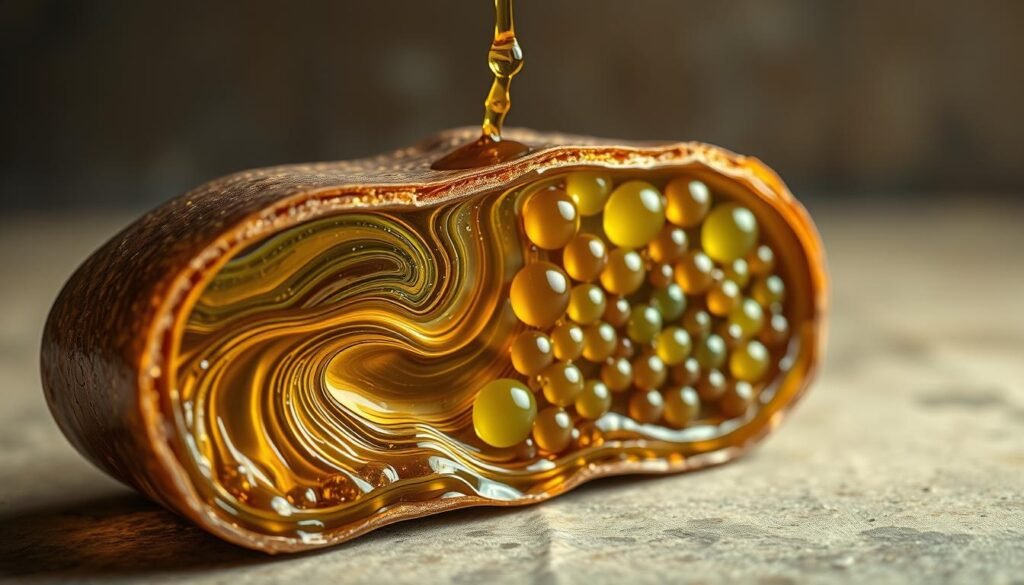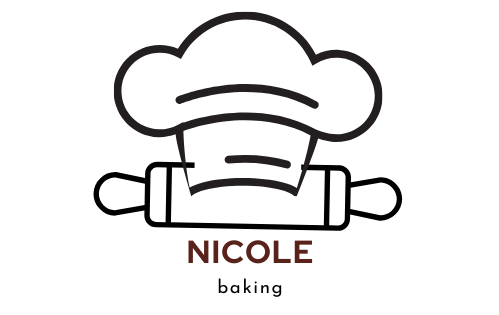
You’ve likely stared at that dusty bottle in your pantry, wondering if it’s still good. While most cooking oils don’t last forever, olive oil behaves differently. Unlike perishable foods, expired varieties won’t make you sick—but they’ll definitely disappoint your taste buds.
Does olive oil go bad? Every bottle comes with a “best by” date, but freshness depends on storage and quality. Exposure to heat or light speeds up oxidation, turning vibrant flavors bland. That prized peppery finish? It fades as antioxidants break down over time.
Rancid versions develop a waxy smell or greasy texture. You might notice muted colors or a bitter aftertaste in dishes. While not dangerous, stale oil loses its health-boosting polyphenols—the very compounds that make fresh extra virgin varieties so valuable.
- Lifetime Assurance: We stand behind the quality of our oil dispenser for kitchen. If you experience any issues or are no…
- Dual Dispensing: This oil mister offers both spray and pour options for total control while cooking. It’s a versatile oi…
- Precision Spray Nozzle: The olive oil spray bottle features a nozzle that delivers a fine mist or steady stream, offerin…
Proper storage extends shelf life significantly. Keep containers in cool, dark spaces and seal them tightly after each use. Trust your senses: if it smells like crayons or tastes flat, it’s time for a new bottle.
Understanding Olive Oil Shelf Life
That golden liquid in your kitchen has its own biological clock. Freshness depends on two critical phases: before and after breaking the seal. Let’s explore how storage conditions and time impact quality.
Unopened Bottle Longevity
An unopened container acts like a time capsule. High-quality extra virgin varieties preserve their peppery zing for 12-18 months post-harvest. Regular types last slightly longer at 18-24 months due to different processing methods.
| Type | Shelf Life | Key Factor |
|---|---|---|
| Extra Virgin | 12-18 months | Harvest date |
| Virgin/Regular | 18-24 months | Bottling date |
Opened Container Countdown
Once air enters the bottle, antioxidants begin battling oxidation. You’ll get 3-6 months of peak flavor before notes turn muted. For frequent cooks, larger bottles work well. Occasional users should choose smaller containers.
Heat and light accelerate quality loss. Store your bottle in cool, dark spaces like cabinets away from ovens. Glass or tinted containers offer better protection than clear plastic.
does olive oil go bad
That bottle sitting in your kitchen isn’t immortal—it has a freshness timeline. When exposed to air, a chemical reaction called oxidation starts altering its composition. This process transforms vibrant flavors into dull shadows of their former selves.

Recognizing Oxidation and Rancidity
Your senses become powerful tools for detecting quality changes. Fresh varieties boast grassy or fruity aromas, while rancid ones smell like crayons or stale nuts. If it leaves a greasy film in your mouth or tastes unexpectedly bitter, those are red flags.
Visual clues matter too. High-quality options typically show greenish-gold hues, while oxidized versions appear cloudy or develop sediment. Touch reveals texture changes—fresh versions feel smooth, while spoiled ones might seem tacky.
Safety vs. Quality Considerations
While consuming aged varieties won’t harm you, it defeats the purpose of using premium products. The real loss comes from vanished antioxidants and polyphenols—compounds responsible for heart health benefits and anti-inflammatory properties.
| Characteristic | Fresh | Rancid |
|---|---|---|
| Aroma | Fruity/Peppery | Waxy/Crayon-like |
| Color | Vibrant Green/Gold | Cloudy/Muted |
| Taste | Peppery Bite | Flat/Bitter |
| Texture | Smooth | Greasy |
Storage conditions dramatically affect degradation speed. Keep containers away from heat sources and sunlight to preserve those valuable compounds longer. Remember: quality loss happens gradually—regular taste tests help catch changes early.
How to Spot Expired Olive Oil
Your kitchen shelf holds clues to your olive oil’s freshness. Like a culinary detective, you can decode quality changes through simple observations. Let’s explore the sensory red flags that scream “time for a new bottle.”
Using Your Senses: Smell, Taste, and Appearance
Fresh varieties greet you with grassy or herbal aromas. If your bottle emits a waxy odor—think crayons or stale peanuts—it’s waving a white flag. Trust that first sniff: your nose rarely lies about quality.
When tasting, expect a peppery zing that fades into smoothness. Expired versions leave a greasy film or bitter aftertaste. That salad dressing tasting flat? Your oil might be the culprit.
| Characteristic | Fresh | Expired |
|---|---|---|
| Aroma | Fruity/Herbal | Crayon-like |
| Flavor | Peppery | Bitter/Sour |
| Appearance | Clear Gold/Green | Cloudy |
Visual checks matter too. While chill-induced cloudiness disappears at room temperature, persistent haze signals trouble. Sediment at the bottle’s bottom? Time to shop for a replacement.
Remember: quality fades gradually. Regular checks help catch changes early. When in doubt, toss it out—your recipes deserve better.
Storing Olive Oil for Maximum Freshness

Your favorite cooking companion deserves a first-class storage environment. Three elements conspire against its vibrancy: heat, light, and oxygen. Outsmart these foes with smart container choices and strategic placement.
Optimal Storage Conditions and Containers
Seek out cool spaces maintaining 57°F-70°F—your pantry beats sunlit countertops every time. Temperature swings near ovens or windows accelerate chemical breakdown. That beautiful glass bottle? Tuck it behind closed cabinet doors for extra protection.
Dark green or brown glass bottles act like sunglasses for your oil. Stainless steel containers offer similar light-blocking benefits. Clear plastic lets harmful UV rays through, fading flavors faster than you can say “extra virgin.”
Always twist caps tightly after use. Oxygen starts degrading quality the moment you open the container. For frequent users, smaller bottles help maintain freshness by limiting air exposure over time.
Despite popular belief, refrigerating isn’t wise. Chilling causes condensation that introduces water molecules, creating a playground for spoilage. Keep your bottle in that cool, dark cupboard—it’ll thank you with richer flavors and longer-lasting goodness.
Tips for Maintaining Olive Oil Quality
Your kitchen habits play a starring role in preserving that liquid gold’s vibrancy. Smart choices from purchase to pour keep flavors bright and health benefits intact.
Best Practices for Daily Use
Match your bottle size to cooking frequency. Occasional chefs should grab 8-12 oz containers—they’ll use it up before quality fades. Bulk buyers benefit from decanting: pour small amounts into a countertop bottle while storing the main supply in a cool, dark place.
Keep these rules in mind:
- Always wipe bottle necks after pouring
- Use clean utensils—never double-dip
- Close lids tightly to block oxygen
Harvest dates trump expiration labels when shopping. Look for “produced on” rather than “best by” dates—they reveal the oil’s true age.
Extra Virgin vs. Virgin: Maximizing Health Benefits
Extra virgin varieties pack more antioxidants—nature’s preservatives that fight spoilage. This makes them last 30% longer than regular virgin types while delivering stronger anti-inflammatory properties.
| Type | Antioxidants | Peak Flavor Window |
|---|---|---|
| Extra Virgin | High | 12-18 months |
| Virgin | Moderate | 18-24 months |
While virgin options cost less, their lower polyphenol content means quicker flavor loss. For dressings or finishing dishes where taste matters most, extra virgin’s bold profile shines brightest.
Conclusion
That golden elixir in your pantry holds the secret to elevating everyday cooking. By shielding your oils from heat, light, and air, you preserve their character-rich flavors and health-boosting properties. Smaller bottles prove smarter for most kitchens—they encourage using oils at their peak, like Brightland’s 375ml opaque glass containers designed to maintain harvest-fresh quality.
Trust your senses more than printed dates. A vibrant aroma and peppery finish signal readiness for dressings or drizzling, while muted tones suggest retirement from starring culinary roles. Premium oils deserve dark storage spaces and frequent use within 3-6 months of opening.
When selecting bottles, prioritize harvest dates and protective packaging. Everyday cooking oils and specialty varieties alike thrive under consistent care. Your attention to storage details ensures every sauté and sauce benefits from nature’s liquid gold at its finest.
FAQ
How long can I keep an unopened bottle?
Unopened containers typically stay fresh for 18–24 months if stored in a cool, dark place. Check the harvest date on the label—older batches lose antioxidants and flavor faster.
What happens after opening the container?
Once opened, it’s best to use it within 3–6 months. Exposure to air, heat, or light speeds up oxidation, which can make the oil taste bitter or rancid.
Can rancid oil harm my health?
While rancidity doesn’t make it unsafe, it destroys nutrients like polyphenols. Consuming degraded products may lead to an unpleasant taste and reduced health benefits.
How do I check if it’s still good?
Trust your senses! Fresh versions have a grassy or fruity aroma. If yours smells like crayons, metal, or old nuts, it’s likely past its prime.
What’s the best way to store it?
Keep bottles away from stoves or windows. Use dark glass or stainless steel containers, and always seal tightly to minimize air exposure.
Does extra virgin last longer than regular types?
Extra virgin has more antioxidants, which slow spoilage. However, its delicate flavor fades faster—prioritize using it quickly for maximum taste and benefits.

